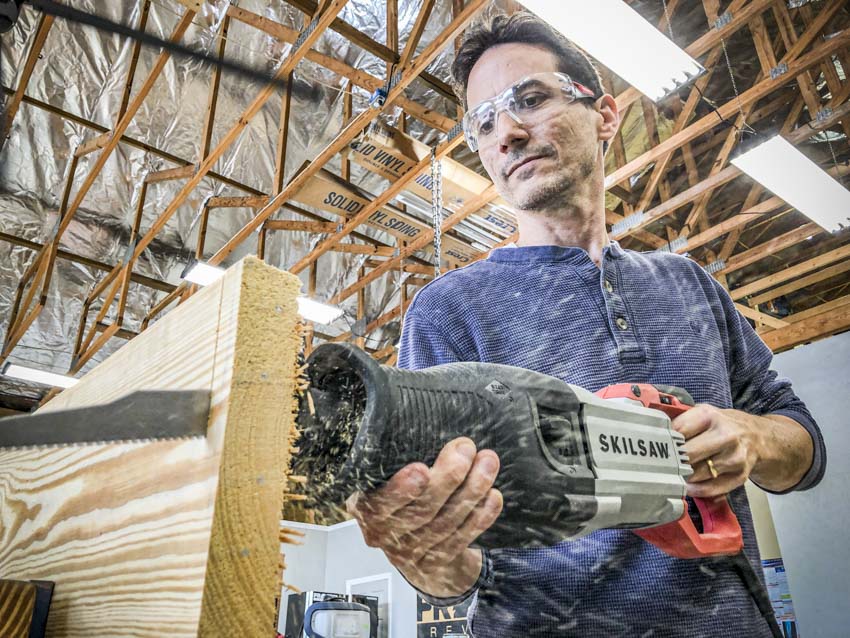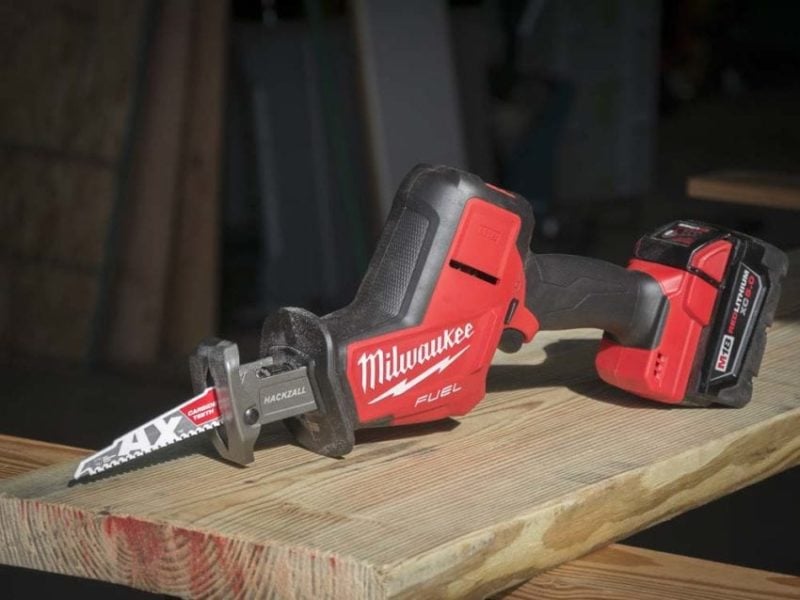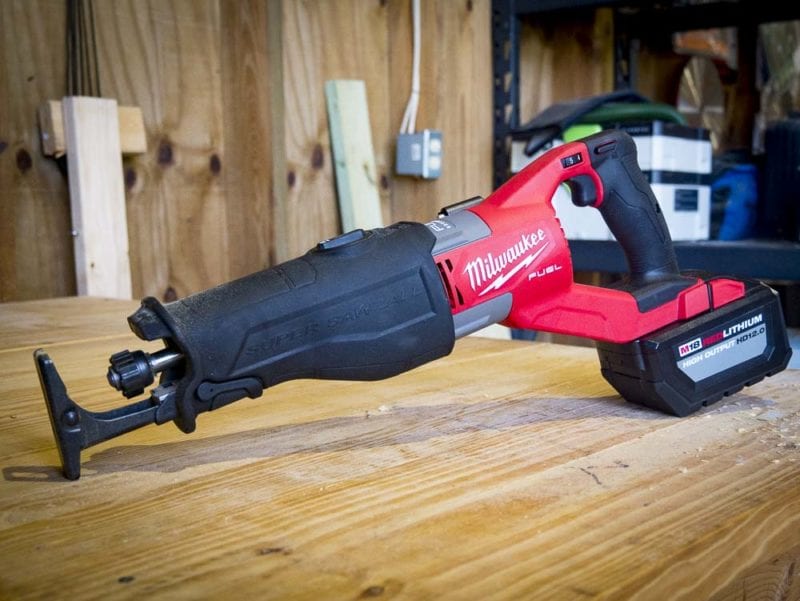Do you know what to look for in a reciprocating saw? After all, a reciprocating saw is just a reciprocating saw, right? Or is it a Sawzall? Buying or choosing a reciprocating saw doesn’t have to be terribly complicated, but knowing which reciprocating saw you should buy requires some research. There are a lot of things to consider when you’re looking for how to choose the right tool. We wrote this reciprocating saw buying guide to answer your questions and clear up the confusion.
Table of Contents
Corded or Cordless? Start Here
The first thing to do when you’re buying a reciprocating saw is to decide what power source you’d like. What to look for in a reciprocating saw starts here—and it requires choosing a brand and battery platform. For the past several years or more, modern advancements in battery technology mean the best cordless reciprocating saws can keep up with the best corded recip saws. You can almost eliminate the question of power when it comes to the corded vs cordless tools question.
Corded Reciprocating Saw Advantages
Corded reciprocating saws still have the benefits of nearly infinite runtime and lower cost. They can also weigh less than some of the top cordless models with their massive batteries.
You will typically spend much less on these tools as you don’t need a battery and charger and they require less technology overall to operate.
Finally, buying a corded reciprocating saw means you have a tool that always works—provided you have an outlet. It never needs charging.
Cordless Reciprocating Saw Advantages
Cordless reciprocating saws don’t have any power cords to manage, and they tend to have more features than corded models. However, they cost more, and you may need 2 or more batteries to work uninterrupted.
Cordless tools also almost always weigh more than their corded counterparts—often adding more than a pound.
Our Pros prefer cordless saws when their budgets allow for them. Look for a reciprocating saw that runs on a battery platform you can expand over time.
One-Hand, Compact, Heavy-Duty, or Something in Between?
It’s great having the biggest, baddest, most powerful reciprocating saw available. However, if you’re an electrician or plumber mainly cutting EMT, copper pipe, or PVC…it’s likely overkill.
One-handed reciprocating saws and compact saws do a great job on thin-wall metal pipes and softer materials like PVC. They’re also much more convenient and easy to use than larger models. They really are made for one-handed use.
One-handed M18 FUEL HackZall One-handed M18 FUEL SawZall
When you start getting into wood cutting beyond 1x, it’s time to start moving up the performance charts. Compact reciprocating saws can get you into tighter spaces with reasonable performance and smaller full-size saws typically make good choices for occasional and overhead use.
But when the going gets tough and you have roofing, cast iron, large diameter pipe, or other monsters to slay, heavy-duty models are your best friend. Bring out the flagship saws!
Bells and Whistles (Handy Features)
We tend to look for features that make a real difference when buying a reciprocating saw. The right feature can improve your cutting performance or make the saw easier or more convenient to use. Following are some of the things we use as a guide when buying a reciprocating saw.
Brushless Motor
While there are corded brushless tools out there, none of the major tool manufacturers are putting brushless motors in their corded reciprocating saws just yet. That’s a feature you only find on cordless models.
Brushless motors require no carbon brush changes, they tend to run cooler, have longer lifespans, and can increase runtime and power. Check out our article on brushed vs brushless motors for more information.
Orbital Action
Orbital action in reciprocating saws makes a huge difference when cutting through wood. Instead of pushing the blade straight out and pulling it back in, orbital mode adds a more aggressive elliptical motion that’s significantly faster. Some of the premium reciprocating saws offer multiple orbital settings so you can select the level of aggressiveness. Knowing when to use orbital action in reciprocating saws helps you cut more quickly and efficiently.
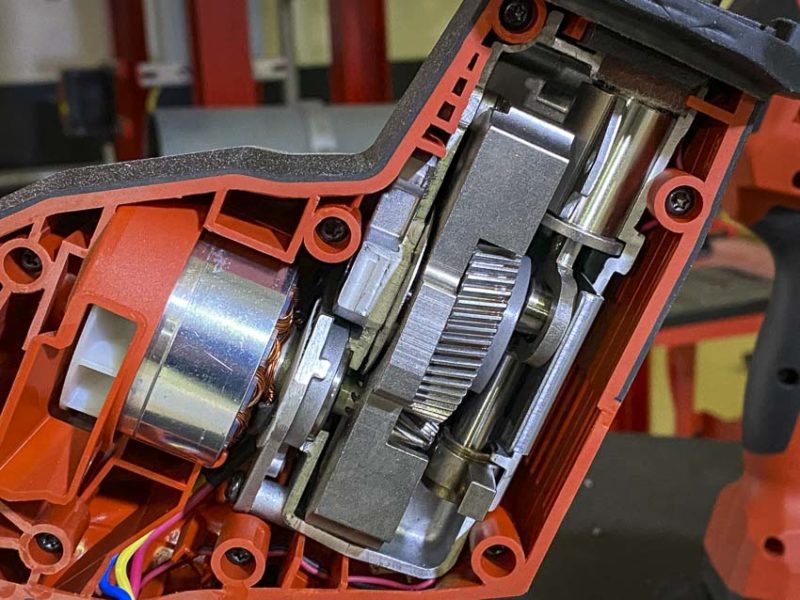
Variable Speeds
Nearly every reciprocating saw you can buy has a variable speed trigger that you can feather when you want slower or more controlled cutting. It’s a lot easier to pull the trigger all the way down, though. Variable speed settings can help you do that.
Some speed controls feature simple High and Low settings or even 3-stage electronic controls. The more versatile use variable-speed dials or even smart controls to let you dial in a wider range of speeds. If we intend to go between wood and metal cutting this feature tops our list of what to look for in a reciprocating saw.
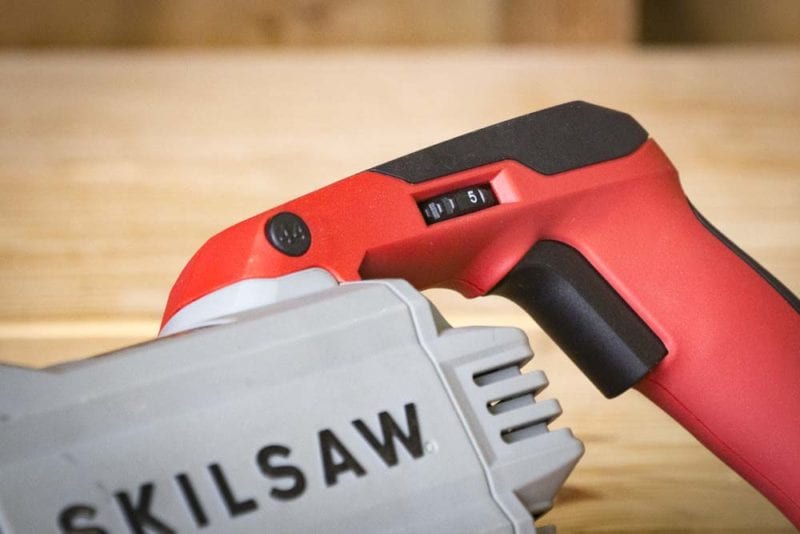
Smart Controls
Currently, Milwaukee has the only smart controlled reciprocating saw, and they did a phenomenal job with the design. The M18 Fuel Sawzall with ONE-KEY lets you customize the speed setting for each mode on the control panel.
More impressively, you can input the material you’re cutting and the blade you’re using to let the app dial in the exact speed and other settings that are optimal. When it comes to getting the best cutting speed and the longest life from your blades, it’s well worth the premium price.
Vibration Control
Several Pro-level brands have advanced vibration controls built into their reciprocating saw. Systems like Skilsaw Buzzkill, Makita AVT (anti-vibration technology), and Hilti AVR (active vibration reduction) help dampen the vibration that comes with such a violent sawing motion to reduce fatigue in your hands and arms. When you’re buying a reciprocating saw, this is definitely something our Pros recommend you put high on your priority list.
Pivoting Shoe
Even if your reciprocating saw doesn’t have advanced vibration controls, a well-design shoe is a big help. By keeping it engaged against the material, you’ll greatly reduce the amount of vibration that makes it to your arms.
Look for a shoe that pivots easily. It will help you keep the saw stable on longer cuts in wood and as you work around pipe or conduit.
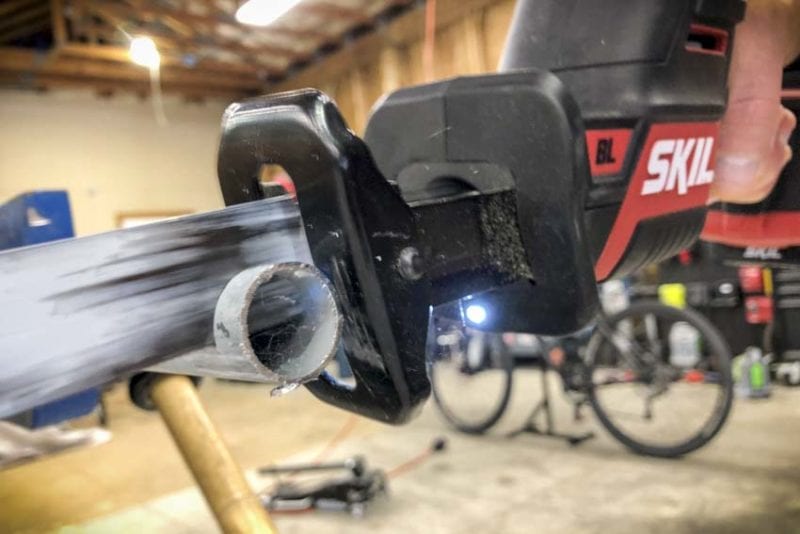
In this reciprocating saw buying guide we also recommend you look for an adjustable length shoe. If you’re cutting a lot of thinner materials like 3/4″ EMT, rebar, or even 2x wood, you can extend the shoe out to use more of the blade once the initial length starts to dull.
The best models have a tool-free option. It often uses a button or lever to unlock and is very easy to adjust quickly.
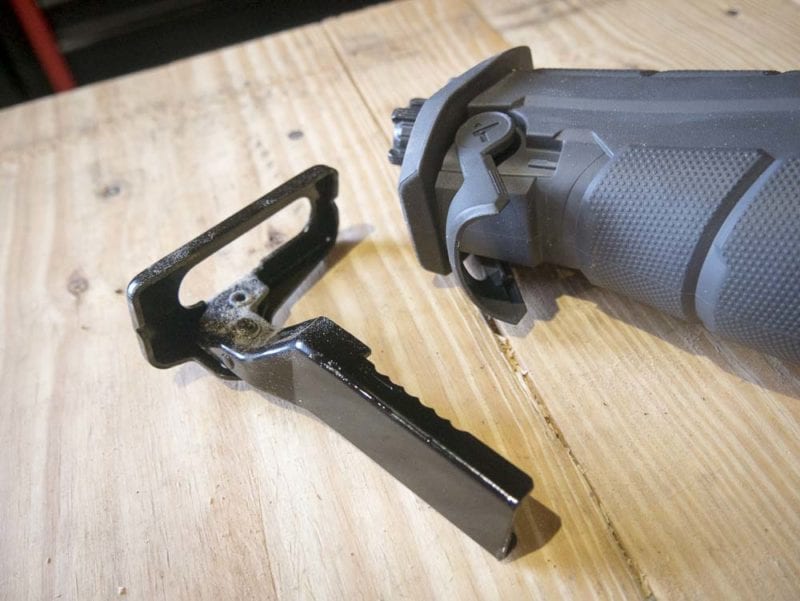
Others use bolts to hold the shoe in place and require a hex wrench to loosen them. Typically, the wrench stores on the tool where it’s convenient to access when you need it.
Blade Release
There are two main types of blade releases on reciprocating saws. The most common are twist locks on the shaft that you reach in to manipulate. We don’t know how to choose a reciprocating saw without taking the blade release into account, We go through blades quickly in demolition, so it matters whether or not they make this process simple.
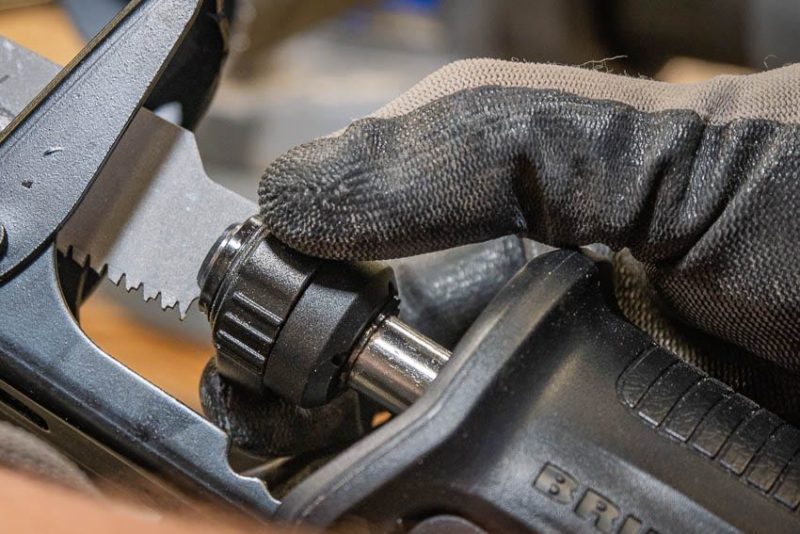
We prefer lever on the outside of the housing, though. Sometimes, the saw’s stroke stops toward the inside of the tool and it can be more challenging to get to the twist lock. Sure, you can pull the blade to bring it back out, but an outside lever works no matter what part of the stroke the shaft is on. When you choose a reciprocating saw, this feature adds a ton of convenience.
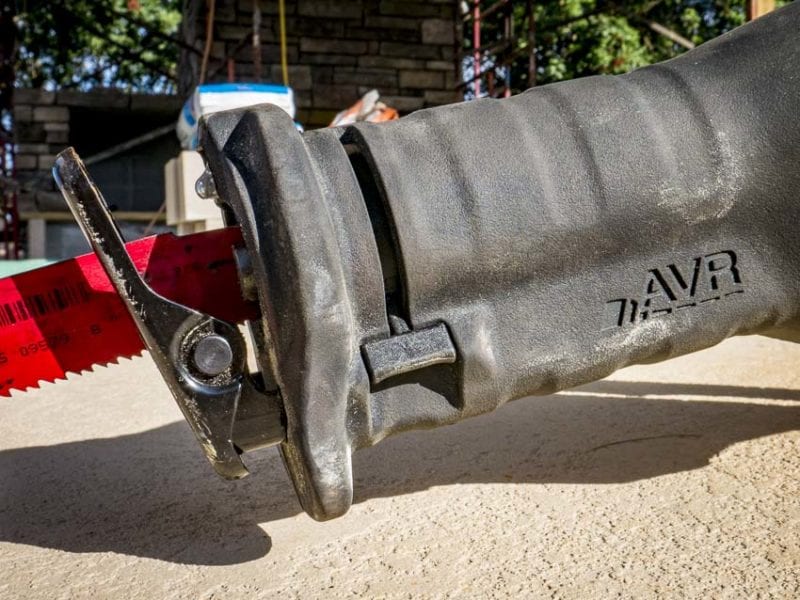
One style worth pointing out is the one Makita uses on several of their Recipro Saws. When you turn the twist lock to release the blade, a spring ejects it and the lock catches in the open position. When you insert a new blade, it automatically closes back to secure it.
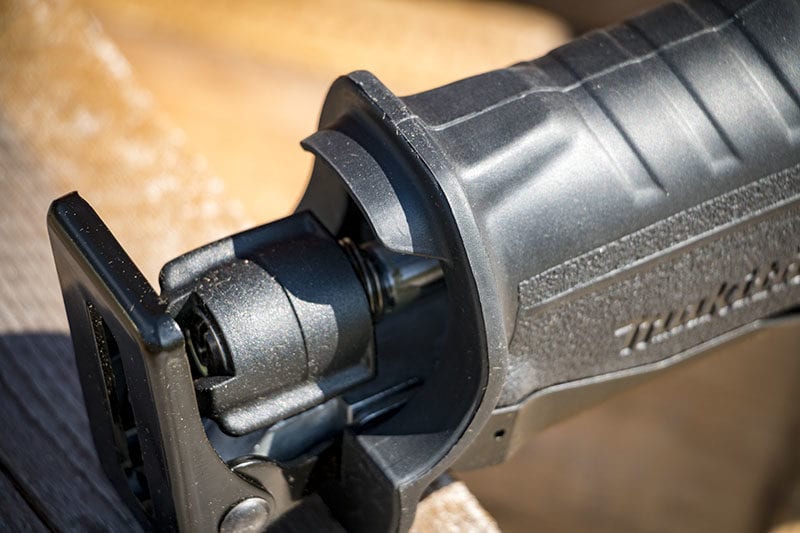
Rafter Hook or Belt Hook
Belt hooks were pretty uncommon on reciprocating saws. The Hilti 12V and DeWalt’s Atomic models include them and we’ve seen more and more manufacturers begin bringing this feature to their one-handed saws.
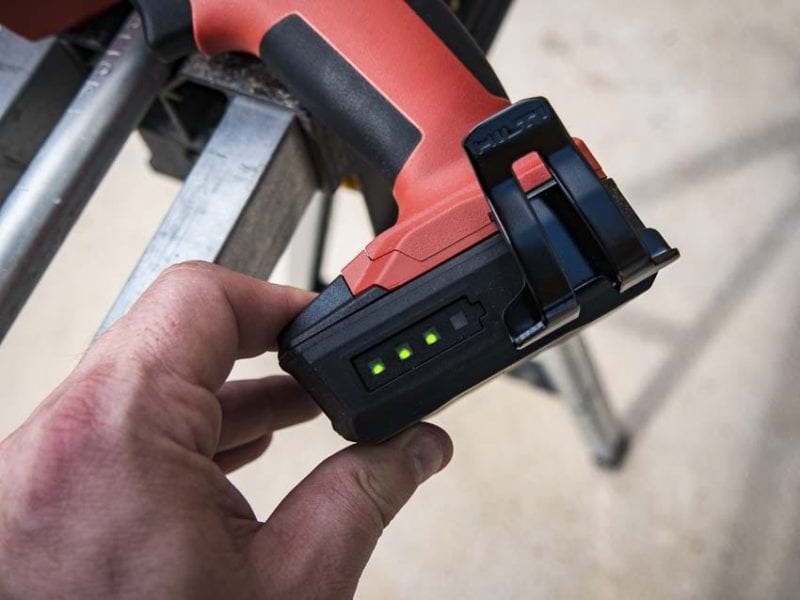
With some of the full-size saws, you get a rafter hook. When you’re working at height or just don’t want to set the saw on the floor, a rafter hook is incredibly helpful. For years, our reciprocating saw buying guide has always made this an important feature to look for on those saws.
DeWalt’s Atomic model also has a unique clawed shoe that is an effective replacement for a rafter hook. Since it’s a much lighter one-hand model, it works well. I’m not sure it would be as stable on a full-size saw.
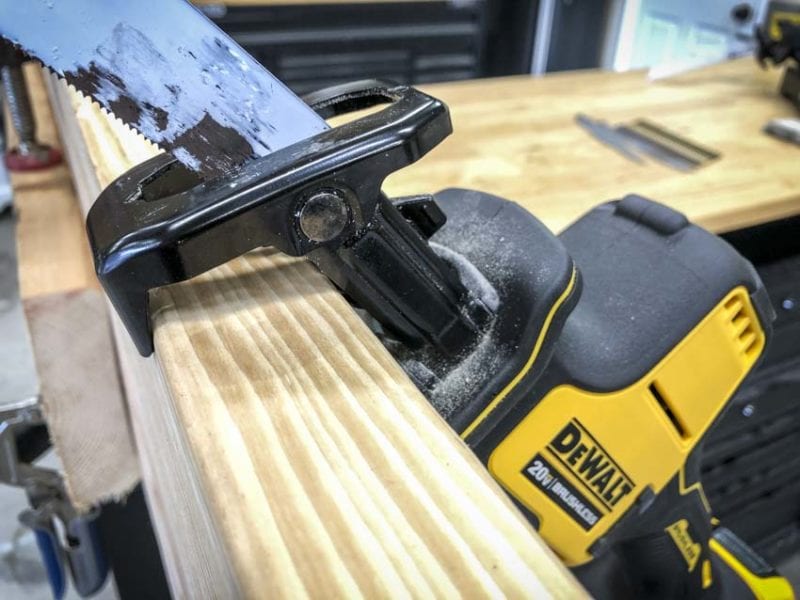
LED Light
LED lights seem present on nearly all cordless power tools. Despite the seemingly small size, they’re effective at helping you line up your cut in darker areas, especially when it’s tough to bring in a separate work light or an object is blocking the beam from your headlamp. Still, when you how to choose a reciprocating saw, the presence of an LED light should fall low on your priority list.
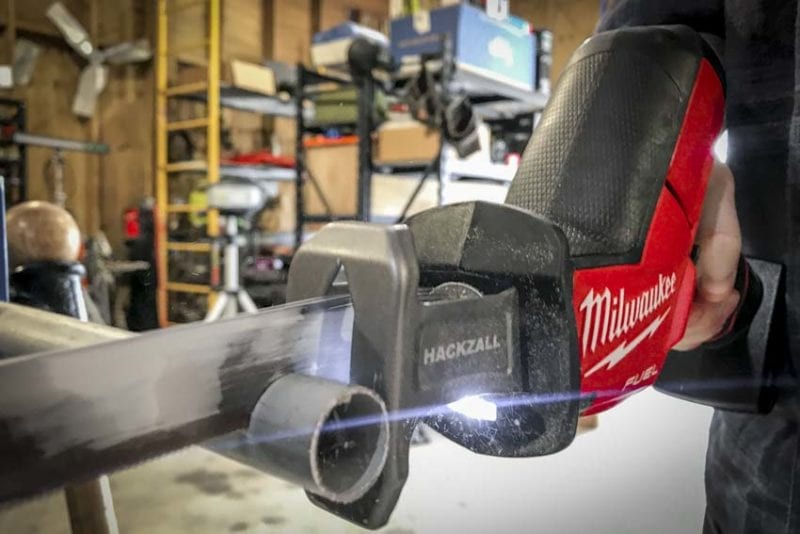
Final Thoughts
Hopefully, this buying guide helps you get a better handle on choosing the right reciprocating saw for your application and needs. While we covered nearly every aspect of the tool, our personal focus tends to emphasize power and low vibration. If you get enough power, and the tool doesn’t shake your arm off while you use it—that’s a great purchase!
Of course, budget matters as well. In any case, we hope this article helps you get a good start on what to look for.
Are you in the process of buying a reciprocating saw? Tell us what’s highest on your list or which one you decided to on in the comments below!

